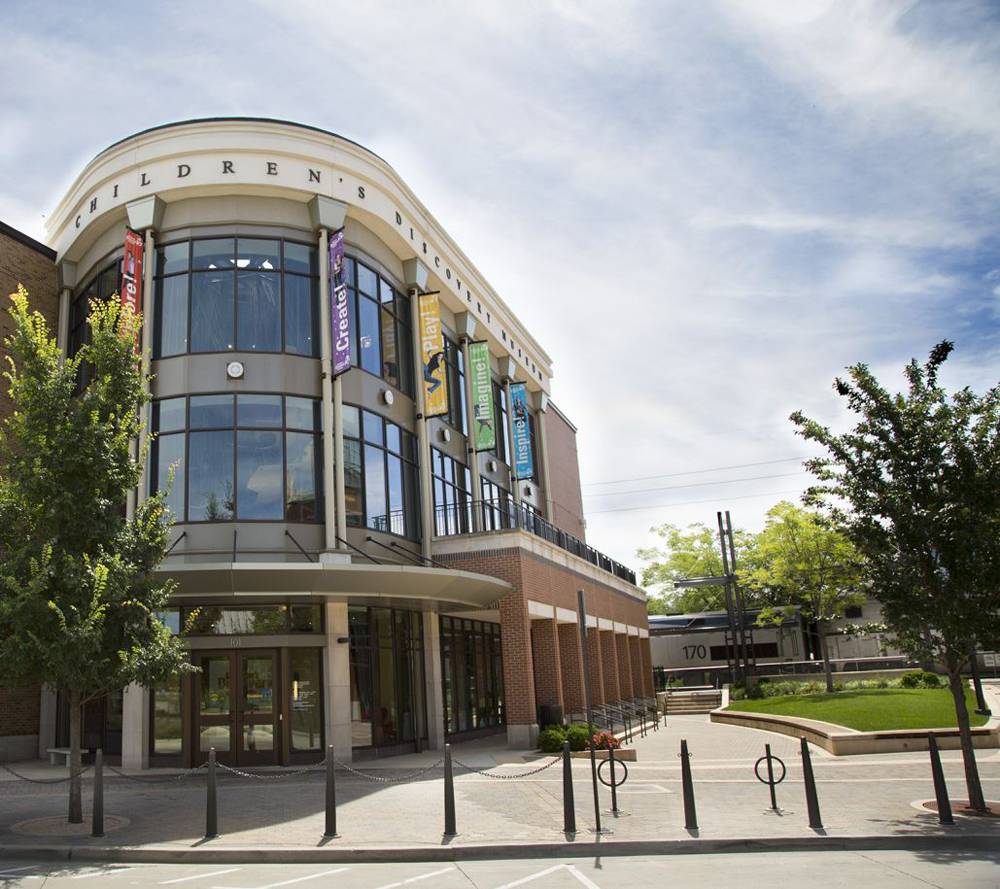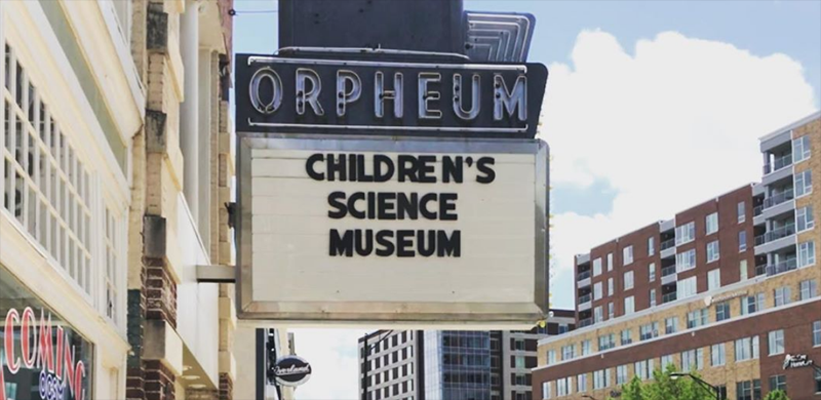As we look towards what the future of Champaign-Urbana might look like after we solve the problems facing us due to the current pandemic, nothing seems more relevant and timely than investment into both education and community engagement. Now is the time for our elected officials to join forces with the public to take over Orpheum Children’s Science Museum (OCSM) in a public-private agreement that will allow it to thrive.
Here are four things to consider:
-
OCSM, as it stands, will not survive much longer with the lack of funding it receives, and without the staff to manage it.
-
A community like this one deserves a children’s science museum that is not just functional, but celebrated as both a local resource and a regional tourism draw.
-
As a community, we have plenty of organizational skills, financial resources, and intelligent people to change this immediately.
We asked Xander Hazel, the most recent former Executive Director of OCSM, about what the biggest challenges the museum is facing, and he told us, “Fundraising prowess and the building, the latter of which is the most significant challenge. There is a potential to reimagine and reinvent what a children’s museum is in that building, but you need fundraising prowess to make that happen.”
To that end, when we asked about the idea of a public-private partnership, he stated “[These] partnerships emerge to improve the community and/or the people you serve through shared missions and values. When the museum board approached potential public partners, the board was told, ‘We value the children’s museum, but want nothing to do with the building’.”
The Orpheum is an historical building and deserves our attention and commitment to its preservation. We don’t have to limit our celebration of theaters to just The Virginia Theatre. There’s room for more and this building already has a leg up in that it has already made strides — the building has undergone hundreds of thousands of dollars in renovations from the time they took it over — and houses an organization that people want to see succeed. For that to happen, you need to consistently raise money, and to raise money, you need people employed who know how to do that. It is a very rewarding job, but a very difficult one.
To forge a public-private partnership the City of Champaign and OCSM should form a committee comprised of community and educational leaders to do five things:
-
Design a funding model to retrofit the current space to code, making the theater space and its lobby into a multi-use rental facility that can host events as an income bearing component to the organization.
-
Have the City of Champaign gift the mostly unused parking lot to the north to expand the museum into a modern, state-of-the-art LEED certified building that houses the indoor section of the museum.
-
Have the City of Champaign devote a sizable piece of the current parking lot in front of the building, which is slated for an upgrade already, and expand into an outdoor section to the museum.
-
Invite Champaign Park District to bring its tax levy funding and well defined know-how into the partnership to function as the operator of the facility.
-
Start a public capital campaign to reach private money inside the community, both big and small, corporate and personal, and begin to invest that into tightly knit relationships with Champaign Unit 4 Schools and Urbana District #116 to complement their educational efforts.
The results would be tremendous for everyone, both educationally and economically. The time for taking this seriously is now. In a community that plays host to one of the world’s foremost Research I universities, this should be basic. There is no need for more discussion about whether or not we fund it, and whether or not it is needed. It has been discussed and it is defined. We need it.
None of this is any secret, or some sort of pie in the sky longshot idea; most communities our size have something respectable, if not celebrated. Just two hours east, the City of Indianapolis plays host to the largest children’s science museum in the world, hosting upwards of 1.25 million people per year, and contributed an estimated $138.7 million of direct economic impact to the city.
Drive 45 minutes northwest to Normal, and you can take a peek at a truly astounding example of how this sort of thing can work in a community our size. When the organization that operates the Children’s Discovery Museum (CDM) began its capital campaign in 2001 to expand into a new space and provide more access to the community, the Town of Normal jumped on board in 2002 and committed to constructing a $4.5 million, 34,000 square foot LEED certified building in the heart of its “Uptown”.

Photo from visitbn.org.
According to its Director of Cultural Arts, Beth Whisman, the museum hosts over 130,000 people per year. Since its opening in 2004, the museum has hosted over two million guests.
“Last year we saw field trips from 27 different counties in Illinois representing more than 100 schools/districts. As far north as Cook County and as far south as Madison County,” she told us. “We are a major educational resource for the region, supporting kits in and out of classroom settings… as well as family visits. We’ve only recently started tracking zip codes for visitors with new software, but we know visitors with reciprocal memberships visited 3,000 times last year and that’s 50 miles out, at least.”
And it’s no surprise that it’s working out the way the Town of Normal had planned; it was all by design.
“The entire redevelopment of the old downtown was built around the concept of having an anchor with day-time traffic,” she continued. “That was the CDM and that’s why we’re right in the middle of it all.”
In a perfect world, we’d have access to all the funding we all need through simple graduated taxation from a federal level that would assist the states in bolstering its cities. The ultra wealthy wouldn’t complain about it, or fight back against the idea; they’d embrace it. But we don’t live in that world, and by now, we truly have no choice but to lean on our local community to execute the changes we want to see.
Two of the many valuable lessons that we can take away from this pandemic crisis are the importance of science-based education for our children and the importance of emphasizing interactivity and creativity as a means to making it effective. The sad truth is that not enough people have been equipped with good facts-based education in ways that are accessible and understandable to the common person. We need engaging and fun ways to show children why science matters, and why good science affects all of us, and can end up saving lives, and perhaps, in the long run, our planet.
To that end, we need our government leadership in Champaign to work with Champaign Park District and engage OCSM, and for them to take this as seriously as they take other economic development projects. Without any hyperbole, this is truly more important than ever, and has far more value to our community than another residential building or new bar concept.
In many ways, the future of our city is at stake, and this is a problem that has a solution, so let’s make it happen.
The Editorial Board is Seth Fein, Jessica Hammie, Julie McClure, and Patrick Singer.








